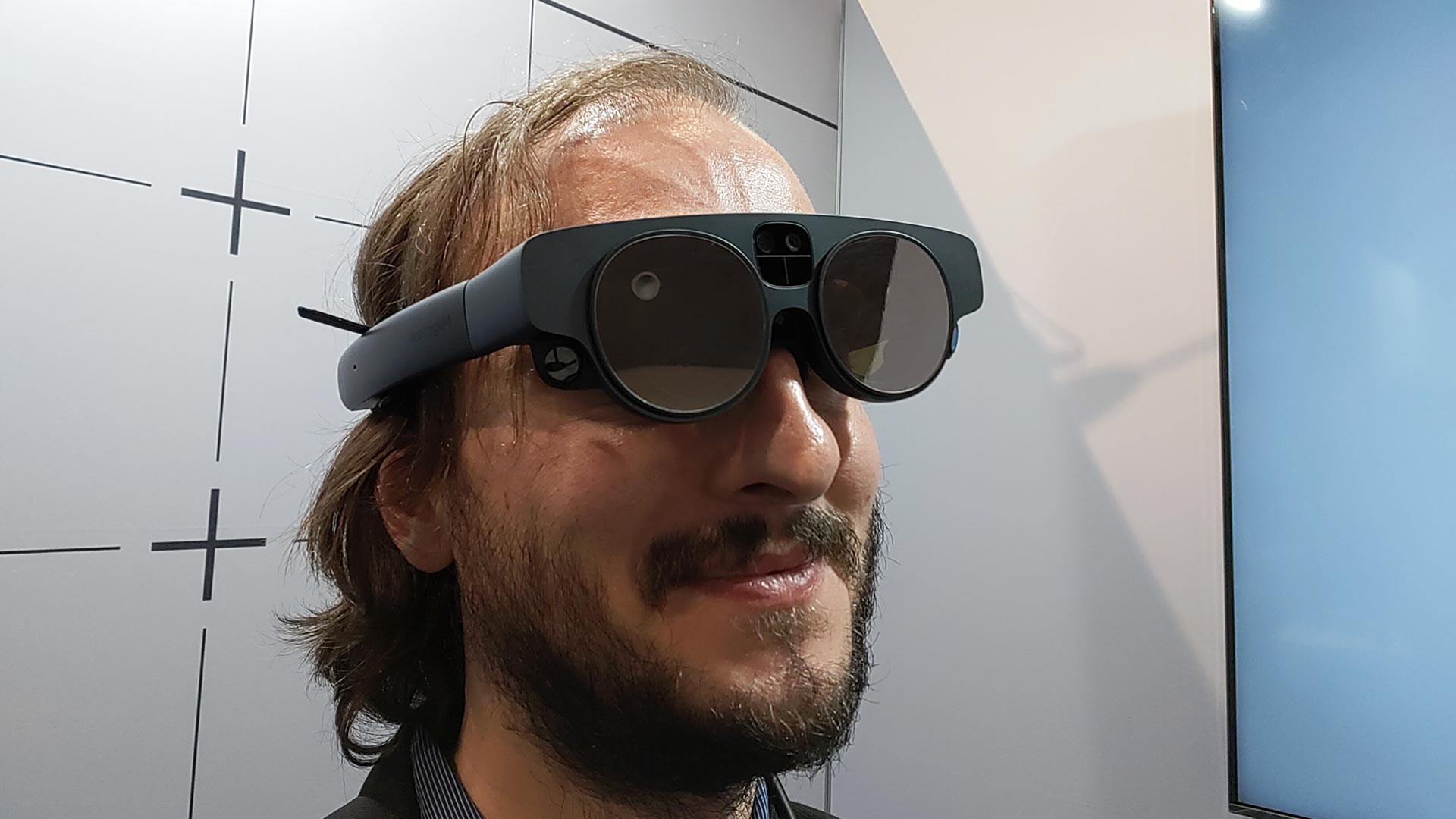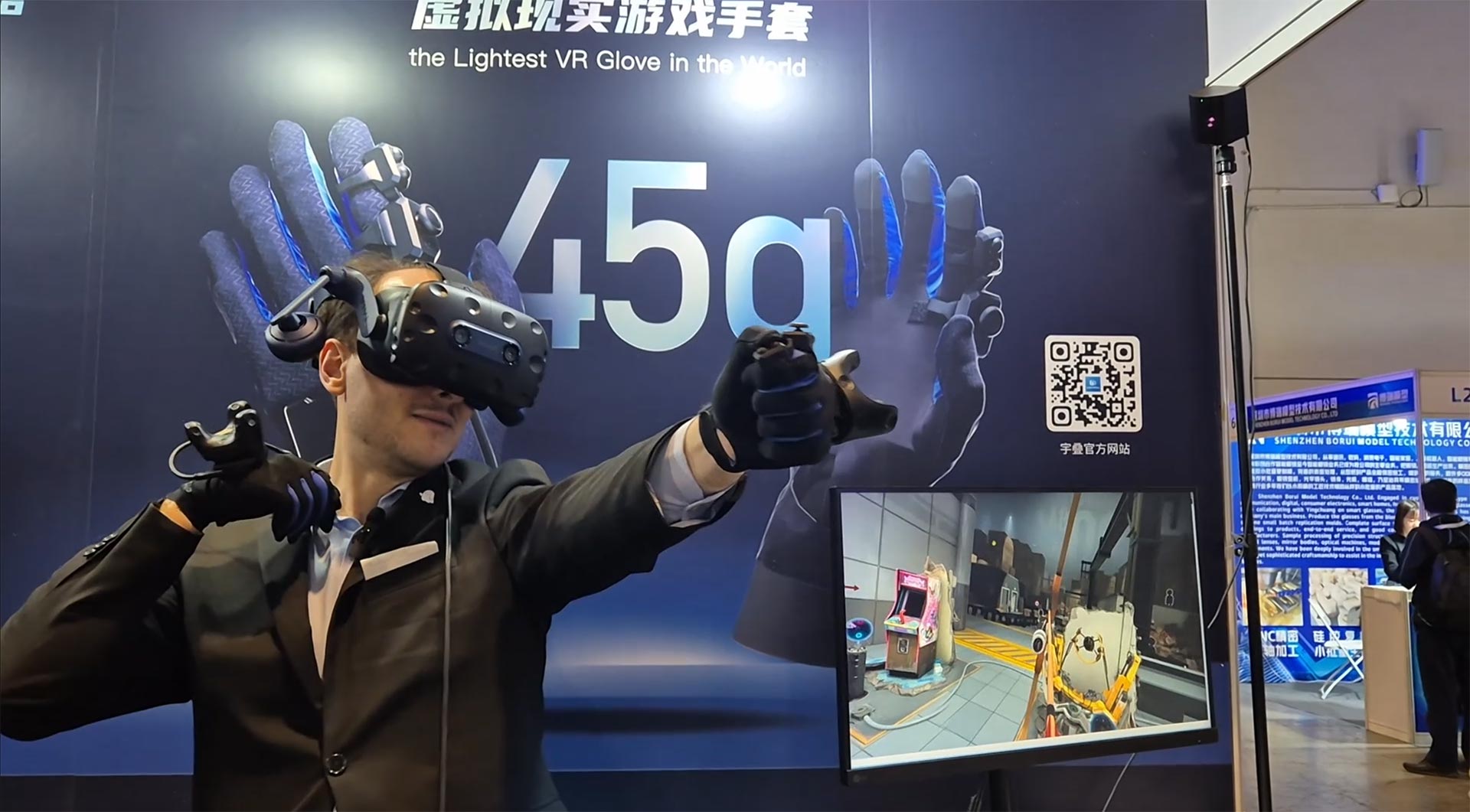AWE 2022: Hands-on with Magic Leap 2 and its awesome visuals
AWE 2022 is being crazy for all the people I’m meeting. And everyone is asking me the same question: “Hey Tony, what is the thing that I should absolutely try at this AWE?” and from this afternoon, I always ask the same thing: Magic Leap 2. Let me explain to you why.
Magic Leap 2 hands-on
I just had two quick demos of a few minutes each with Magic Leap 2, so of course, I’m not able to write a complete review for you, but just a first impressions article. So take what I’m writing here with a grain of salt because it’s possible to truly understand a product only after you use it for a long time. Anyway, the surprising thing is that from this short session I had with it, I had the impression that Magic Leap 2 is a very good product, which totally destroys HoloLens 2 for what concerns the visuals. And I’m not kidding at all.
Comfort

Magic Leap 2 was very lightweight and comfortable on my head. Surprisingly, there was no knob or other similar fitting mechanism, I just had to grab the back part of the headband with two hands, and pull the hands apart to make the headband looser, and push them together to make it tighter. Very easy to understand, and very effective.
The true nuisance of the device is that it is an all-in-two headset: it still has a compute pack that you must wear somehow, and that is connected with a cable to the device. In my short tests, the cable was not a nuisance, but wearing two devices instead of just one, as it instead happens with the HoloLens 2, adds some friction.
As for the controller, its ergonomics were not bad, but also not great for the shape of my hand: it seemed a bit bulky, and the index finger that had to operate the trigger was always a bit in tension. This was not a major issue, but was still noticeable to me.
Visuals

Let’s get back to the real deal of the device, that is the visuals: I tried a demo in which I could see a 3D version of a map of a city, and I could zoom it in or out, move it, and also see some UI panels about it.
The augmentations were good, the text of the demo was readable, and the colors were ok: maybe not the brightest colors I have ever tried (I think Nreal Light has more saturated colors), but still good. There were no weird artifacts and rainbows like with HoloLens 2. The overall impression was that the quality of the virtual elements was good. Sometimes it was a bit annoying to see some colored reflections on the internal of the lenses, but probably this happened because of the many lights behind me in the expo area.
The “holograms” were still semitransparent, like in all other AR headsets currently on the market.
What totally surprised me has been the FOV: Magic Leap 2 features a much bigger FOV than Magic Leap 1, and it is even bigger than the one of HoloLens 2. The company bet on increasing the vertical field of view, and the results are great.

Let me tell you this clearly: for the first time, I have tried an augmented reality headset, and found its field of view usable. If we don’t consider the great Realmax, with all the AR headsets, I have always had the impression of looking through a window, while with Magic Leap 2 I have not had this impression. Don’t misunderstand me, this FOV is not perfect, and it is much smaller than the one of human eyes, and still smaller than the one of VR headsets… but it is finally big enough to be acceptable.
And besides this, Magic Leap has worked a lot to avoid the “window effect” in every possible way: the FOV limits coincide with the frame of the glasses, so your brain accepts that “the augmentations are only where there are the glasses”, and the FOV limits are less an issue. But even better, the borders of the FOV areas are blurred: this means that the more you go towards the limits of the FOV, the more the augmentations become transparent. This gradient effect makes sure that there are no abrupt borders of a “window of vision of AR elements”, but all blurred borders, which are much more pleasant to be seen.
Audio
I have not been able to test the audio of the device, but a Magic Leap employee told me they have a very cool demo with 360 spatial audio that people usually love. I can’t wait to try it.
Tracking

The positional tracking of both the headset and the controller was good enough to let me try the AR experience without any problems. I haven’t performed any serious stress test, though, so I don’t know how the controller performs when I move it very fast. But for slow movements typical of a point-and-click experience, it performed very well. I didn’t even notice it was tracked via onboard cameras, the tracking was totally usable.
The augmentations were also solid in place: when I moved or rotated my head, they stayed mostly still in place, and this shows that the algorithm used for the tracking is very solid. I say “mostly” because actually when you move your head (e.g. rotating it) or you walk, you see the virtual elements trembling a bit and have a very slight chromatic aberration. This phenomenon stops when you stop moving. On this side, I think that HoloLens 2 still has a very small edge on Magic Leap 2, but this doesn’t surprise me given the many years of experience that Microsoft has on the topic (since Kinect 1).
Dimming

Let’s come now to the visual superpower of Magic Leap 2, the feature no other headset has, which is dimming. Magic Leap 2 can apply a global dimming or selective dimming to the lenses. Basically, it can make the lenses become dark in some regions.
I have tried this with a separate demo (thanks Magic Leap people for this opportunity) in which I could see some 3D elements in the room (e.g. a robotic arm, or a video, or some mountains), and then I had some options I could change about my experience. One of them was about dimming, so I could see the difference between non-dimmed visuals and dimmed visuals. Dimming is activated by the application, so it is not applied automatically by the runtime to all experiences.
I started seeing the electronic arm in the room, and I could see it as the usual augmentation that is slightly transparent. I then checked “selective dimming” and nothing seemed to change at a first sight, but then I looked better at the hologram and I noticed it had become fully opaque. All the rest was still transparent as before, but the hologram was not semi-transparent anymore, but opaque. There was a bit of leakage of darkness around the 3D model, meaning that the areas of real world around the robotic arm appeared slightly darker than they should have been, but the illusion was anyway pretty cool.
Then I was requested to start the video: without dimming, the video, which had a black background, appeared to have a transparent background. Then I activated selective dimming, and the areas internal to the video become black, while all the remaining visuals remained the same (apart from the leakage described above). Now, to understand the awesomeness of this, step back one moment and think about my last sentence: the areas of the video were black. BLACK. The impossible color to obtain on AR headsets. It was there, right in front of me. On AR glasses. I was kinda shocked.
I was then asked to apply global dimming, and the lenses became fully opaque, and the glasses basically became a VR headset. WOW, so the Magic Leap 2 can work both as an AR and VR device. I was surprised again. I have to say that the coverage of the lenses was far from perfect, though. They looked as if someone had spilled black ink over them: some regions were fully opaque, others leaked some light, others let me see the real world, but the pattern for this was messy, like made of stains, not regular like in a grid. So the lenses can’t become uniformly black like in a VR headset, but can become mostly opaque, which can be good enough for the required applications on this device.
Other stuff
I have listened to the keynote today by Magic Leap and I appreciated their attitude towards openness and their work in integrating both OpenXR and WebXR standards.
It has also been stated that plans for worldwide distribution will be shared soon.
Final impressions

Magic Leap 2 has been my highlight of the day, especially for two reasons: the FOV, which is finally acceptable for an AR glass; and the dimming, which makes the holograms opaque and finally allows us to see the black in AR. It seemed to me a very solid product, and its visuals totally outperformed the ones of the Hololens 2. It seems strange to me to say that, but Magic Leap may have superseded Microsoft: if it finds a good partnership for the cloud, so that it can also compete with HoloLens offering of cloud services (Azure’s ones are pretty good), it can really become the market leader in the enterprise AR sector.
As I’ve said, take these first impressions with a grain of salt. But for sure, this device is a huge step forward compared to the Magic Leap 1. For the current status of the technology, that doesn’t allow for the AR of our dreams yet, it is a very good product.
Disclaimer: this blog contains advertisement and affiliate links to sustain itself. If you click on an affiliate link, I'll be very happy because I'll earn a small commission on your purchase. You can find my boring full disclosure here.



